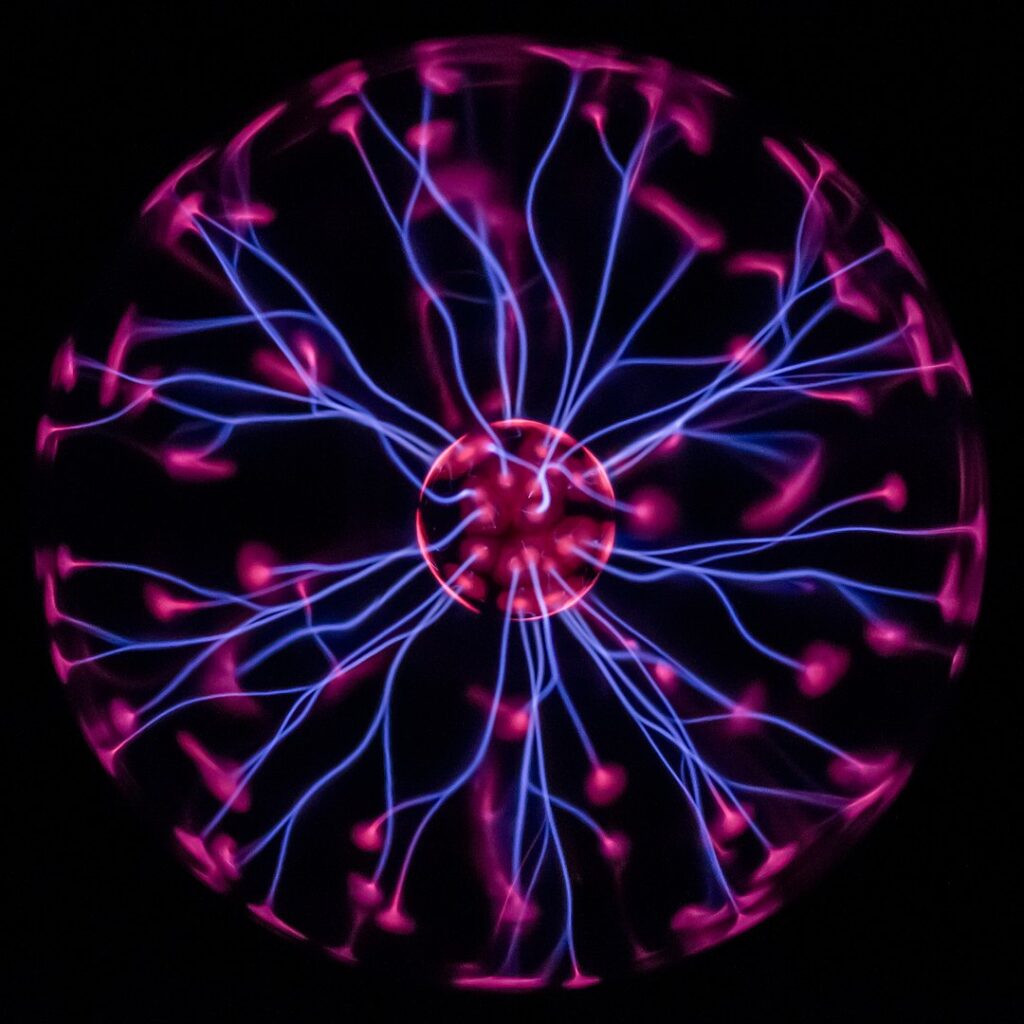By James Myers
In late 2023, chemists at Rice University discovered that when stimulated by infrared light, the atoms in a dye used for medical imaging began to vibrate with sufficient force to rupture the membranes of cancerous cells.
Dr. Ciceron Ayala-Orozc, from the Tour Lab at Rice University, was the lead author of the study published in Nature Chemistry that reported the “complete eradication” of human melanoma cancer cells in a test tube using a low concentration of the imaging dye stimulated by a low dose of near-infrared light.

Dr. Ciceron Ayala-Orozc was the lead author of a 2023 study on the creation of light-stimulated cancer-destroying molecular jackhammers, published in Nature Chemistry. Photo by Jeff Fitlow/Rice University
Called vibronic-driven action (VDA), the process differs from other types of light therapy involving interactions with oxygen and heat that inhibit cancer cell destruction. Stimulated by light, the molecules in the dye vibrated in unison at a consistent frequency to form what is called a plasmon. The plasmon’s force was applied to break the membranes of the cancer cells.
A plasmon is a quasiparticle that represents a collective oscillation of electrons in a material, particularly in metals and semiconductors.
The researchers wrote, “The molecules that destroy cell membranes through VDA have been termed molecular jackhammers because they undergo concerted whole-molecule vibrations. Given that a cell is unlikely to develop resistance to such molecular mechanical forces, molecular jackhammers present an alternative modality for inducing cancer cell death.”
Significant advantages of the VDA process are the high speed at which the jackhammers operate and their use of near-infrared light that, unlike visible light, can penetrate bodily tissues as deep as 10 centimetres. In VDA, the dye molecules function at an astonishing rate of 40 trillion oscillations per second.
The process has not yet been tested in a human, however initial tests in mice demonstrated that VDA eliminated melanoma tumours in 50% of the mice. Research is continuing on methods to increase the effectiveness of the process in a living body, and in late 2024 the University of Texas reported that researchers had developed 75 different types of molecular jackhammers.

“The structure of an aminocyanine molecule (a molecular jackhammer) overlaid on top of the calculated molecular plasmon by TD-DFT theory, with the characteristic symmetrical body and long ‘side arm’.” (Image by Ciceron Ayala-Orozco and caption by Rice University)
Melanoma is a form of skin cancer. The United Nations’ World Health Organization reported 331,722 worldwide cases of melanoma and 58,667 deaths in 2022, making it the 17th most prevalent cancer globally.
Human trials of VDA will likely not begin for six or more years. Quoting Ayala-Orozco, The Daily Mail reported that the university will need to partner with a private company to scale up, overcome regulatory hurdles, and enter human trials, “hopefully, within 5 to 7 years.”
Visible light consists of electromagnetic waves, and electromagnetism is being explored for other means of eliminating cancerous cells. For example, experiments have been conducted using electric fields to break up the cells, and researchers are testing combinations of electromagnetism with other cancer inhibitors like chemotherapy as a means of increasing treatment effectiveness.

Electromagnetic interactions are responsible for the glowing filaments in this plasma globe. Image by user:Colin on Wikipedia.
Frontiers Oncology reports that electromagnetic therapies might increase the survival of immune cells that target cancer.
“Clinical studies examining a few of these combined EM-platform approaches are in their infancy, and a greater thrust in research (including basic, clinical, and translational work) in understanding how EM platforms may integrate with immunotherapy will be critical in driving advances in cancer outcomes under this promising combination.”
A number of studies on the effects of electromagnetism on cancer cells in test tubes have focussed on specific energy frequencies, differing delivery mechanisms, and a range of exposure types, making the results difficult to compare and extrapolate. However, as Frontiers Oncology states, “Despite these challenges and fragmentary insights, an early common theme emerging from such research is that the overwhelming effect of exposing tumor cells or whole experimental tumors to EM platforms is a notable inhibition in tumor cell growth and augmented tumor apoptosis [controlled cell death] as a result of such exposures.”
Cancer treatment based on electromagnetism – whether in the form of pulsed electric fields or light-stimulated molecular jackhammers – is still in the early stages. While laboratory test results show significant promise, much work is still required to advance the treatments to human testing.
In the meantime, other methods like immunotherapy have resulted in major advancements in cancer treatment and survival rates. Whether on its own or in combination with other methods, treatments based on electromagnetism hold promise for conquering melanomas and other cancers.
Craving more information? Check out these recommended TQR articles.
- Thinking in the Age of Machines: Global IQ Decline and the Rise of AI-Assisted Thinking
- Everything Has a Beginning and End, Right? Physicist Says No, With Profound Consequences for Measuring Quantum Interactions
- Cleaning the Mirror: Increasing Concerns Over Data Quality, Distortion, and Decision-Making
- Not a Straight Line: What Ancient DNA Is Teaching Us About Migration, Contact, and Being Human





